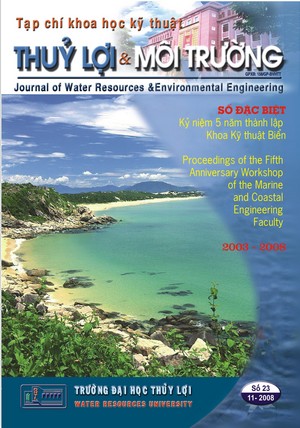Review of empirical relationships between inlet cross-section and tidal prism
Tóm tắt
Although other engineers had considered the relationship between tidal prism and inlet cross-sectional area before, it is O'Brien who is usually credited for deriving the familiar relationship A = aPm, where A is the cross-sectional area (relative to mean sea level) and P is the spring tidal prism. The coefficients a and m vary from entrance to entrance; however O'Brien (1969) showed that for 28 US entrances, a=4.69 10-4 and m=0.85 are best-fit values applicable to all entrances when P is measured in cubic meters (m³) and A in square meters (m²).Many different suggestions have been made in literature about the rationale behind the above relation. We explore here some theoretical elaborations inspired by this literature. The most popular elaboration is to express A in terms of the so named "stability shear stress", which in the approaches of Gerritsen (1990) and Friedrichs (1995) is defined as the shear stress needed to maintain a zero net transport gradient along the channel, which is assumed close to the critical shear stress for sediment motion. However, one may claim as posed by Kraus (1998) that this shear stress is not necessarily equal to the critical shear stress, since a certain transport capacity is necessary to remove the sediment deposited by the littoral or alongshore drift.
This contribution compares some theoretical elaborations both qualitatively and quantitatively, confront these with US and Dutch empirical data and discuss their pros and cons for practical applications.

